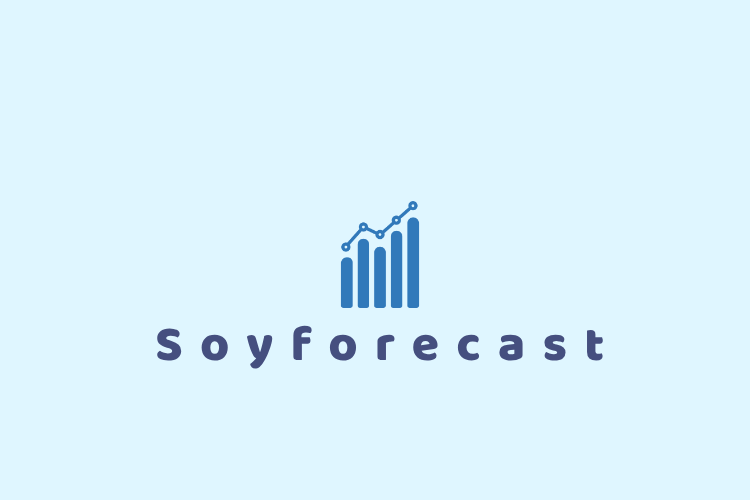
CTA trading programs are a systematic way to identify and follow market trends. It is usually based on fundamental and technical analyses. These strategies have proven to be successful over the years. They can be volatile. They can cause significant drawdowns, especially if major trend reversals happen.
These programs employ a systematic approach to generate signals for futures contracts such as equity and commodities. This allows them scaling and increasing transparency. Some funds will keep trades open for years, or even months. Leverage is a way to lower risk and increase returns.
CTAs are the most used type of CTAs. In the short to medium term, most trend followers employ a position management strategy, or a strategy that limits losses. This means that a trade is only put on if the trend continues. When the trend breaks, the trade is stopped immediately. These CTAs could have similar drawdowns to equity funds.

Although both systematic and discretionary strategies may be similar in many respects, they differ in terms of risk management. Systematic strategies place trades on the basis of models that are coded into trading algorithm. Discretionary approaches are more human-based. They often include fundamental analyses. There are risks of both investing strategies being too disciplined.
CTAs typically use a combination technical and fundamental analysis. To lower overall volatility, most managers will trade a variety of instruments. They will also make all trading decisions regarding the portfolio overall.
Richard Donchian was a key figure in the early days managed futures. His Turtle Trading program was a catalyst to a multitude of CTAs and he taught a system which was used by many successful traders.
CTAs that follow trends have a short- to medium-term time frame. The momentum of an asset is used to determine whether a trader takes long or short positions on certain futures markets. CTAs might choose to hold a long position on the US stock market if the US equity price falls with the global bond markets. CTAs may consider investing in the US Dollar if they are confident that the US economy is going to strengthen over the coming months.

Discretionary CTAs follow a more fundamental approach when making trading decisions. These programs are based upon human judgement and risk management techniques. Unfortunately, not everyone has had the opportunity to achieve their goals. Many CTAs are not able to survive beyond their first year.
It does not matter if your interest is in a systematic, or discretionary approach, you need to be aware about the different CTA trade programs. Each program can have varying levels risk/reward and uses a different approach. The best approach is one that meets your needs.
CTAs are a great way to diversify your portfolio. CTAs aren't as closely correlated with traditional investments and can provide long-term positive returns. Investors need to be aware that they can be highly volatile.
FAQ
How Can I Invest in Bitcoin?
It can be difficult to invest in Bitcoin. But it isn't as hard as you think. You just need the right knowledge, tools, and resources to get started.
You need to be aware that there are many investment options. To gain exposure, you can either buy Bitcoin directly or trade it on an exchange.
It is also important to choose where your bitcoin will be stored. There are many options, including wallets, exchanges and custodians. You may choose one option or another depending on your goals and risk appetite.
The next step is to research additional information you might need in order to be confident about your investment decisions. Before you start investing in cryptocurrencies, it is important to learn the basics and understand how they work. You should also keep up to date with market news and developments in order to stay abreast of the latest crypto trends.
Create a plan for investing Bitcoin based upon your level of experience. Set reasonable expectations for returns. This will increase your long-term success.
Which trading site is best for beginners?
It all depends on your level of comfort with online trading. It's a good idea to begin with an experienced broker who has expert advisors if you are completely new to online trading.
These brokers take the guesswork out of choosing companies and give solid recommendations that can help you build a portfolio steadily over time. Many offer interactive tools to help you understand how trades work.
If you are more confident and have some knowledge, you can trade your investments independently on many websites. They offer customizable trading platforms, live data feeds, and research resources like real-time analytics to make well-informed decisions.
No matter which route or method you choose, you should always read customer reviews before making a decision. This will allow you to get an overview of the service and experience at each site.
Which is harder crypto or forex?
Both forex and crypto have their own levels of complexity and difficulty. Crypto may require a greater level of understanding due to its newness and connection with blockchain technology. Forex is a well-established currency with a stable trading infrastructure.
There are greater risks in cryptocurrency trading than forex. This is because crypto markets can move quickly and in unpredictable ways. You can gain an advantage over your competitors by researching historical trends in the markets in which it trades.
Forex traders must understand the dynamics of foreign exchange pairs. This includes how prices change based on news events. You also need to be able to read and understand technical indicators, which can signal buy or sell signals. Leverage is also an important factor to be considered, since traders can risk their capital as well as additional borrowed funds when trading currency pairs of high volatility.
Forex and crypto both require keen research skills and attention to ensure successful trades.
Where can I invest and earn daily?
While investing can be a great way of making money, it is important to understand your options. There are other ways to make money than investing in the stock market.
Real estate is another option. Investing in property may provide steady returns and long-term appreciation. It also offers tax benefits. Diversifying your portfolio might be a good idea.
You could also look into investing in dividend-paying stocks or peer-to-peer lending sites that allow you to lend money and receive interest payments from borrowers. Online trading is possible if you're comfortable with the risks.
Whatever your investment goals might be, it is crucial to thoroughly research every type of investment before jumping in. Each asset has its risks and rewards. To maximize your earnings and help you reach your financial goals, make sure to closely track any investments.
What are the disadvantages and advantages of online investing?
Online investing is convenient. You can manage your investments online, from anywhere you have an internet connection. Online trading allows you to access market data in real time and trades from anywhere. Online brokerages are often cheaper than traditional brokerages. This allows investors to get started quickly and with less money.
Online investing comes with its own set of disadvantages. Online trading can make it difficult to receive personalized guidance and advice, since you don't have access to a financial advisor or broker to assist you with your decisions. Online trading platforms might not provide the same level security as traditional brokerages. Investors need to be aware about the potential risks. Online trading can be more complicated than traditional investing. It is important to learn the markets and create a solid strategy before you start.
When considering investing online, it is also important that you understand the types of investments available. Investors have many options. They can choose from stocks, bonds, mutual funds and cash equivalents. Each investment type has its own risks, rewards, and it is important to fully research each option before making a decision. Some investments may also require a minimum investment or other restrictions.
Frequently Asked Question
What are the 4 types?
Investing can be a great way to build your finances and earn long-term income. There are four major categories: stocks (bonds), mutual funds (mutual funds), and cash equivalents.
Stocks can be divided into preferred and common stock. A common stock is an individual's ownership of a company. This includes voting rights at shareholder meetings as well as the ability to receive dividends. A preferred stock, however, gives an individual ownership right but without voting privileges. It also offers fixed dividend payments which provide investors with a steady income stream.
Bonds can be loans made by investors to governments or companies for interest payments. Bonds offer greater stability and lower risk than stock, but they have higher returns than stocks.
Mutual funds can be described as pooling investors money together to spread investment risks and diversify investments over a wide range of securities. This includes stocks, bonds, and other commodities. Professional managers oversee mutual funds and use their expertise to pick profitable investments that fit pre-set criteria. These include risk tolerance or potential return.
The cash equivalents can be products such as Treasury bills and money market deposits, CDs, and commercial paper. These products usually mature within one to three years, which means they are less susceptible to default or declines in value. This type of investing is best for conservative investors who aren't willing to take high-risk but still want a higher return than depositing money in low-interest bank accounts.
Statistics
- One pip typically equals 1/100 of 1%. (investopedia.com)
- One pip typically equals 1/100 of 1% or the number in the fourth decimal point. (investopedia.com)
- Schwab Security Guarantee, Schwab will cover 100% of any losses in your Schwab accounts due to unauthorized activity. (schwab.com)
- Fidelity's current base margin rate is 11.325%. (fidelity.com)
- Effective since 12/16/2022, Vanguard is 9.50% for debit balances of $500,000 to $999,999.99. (fidelity.com)
External Links
How To
What precautions do I need to take to avoid being a victim of online investment frauds?
Protect yourself. To avoid being conned, learn how to recognize scams and understand how fraudsters operate.
Don't fall for any offers that appear too good to pass up, high-pressure sales tactics or promises of guaranteed return. Do not respond to unsolicited emails or phone calls. Fake names are often used by fraudsters. Never trust anyone based solely on their name. You should thoroughly investigate investment opportunities and do your research on the person offering them.
Never place money on the street, in cash or via wire transfer. This should alarm you if they insist upon such payment methods. Never forget that scammers will try any means to steal your personal data. Avoid identity theft by being aware and alert to the various types of online scams, suspicious links sent via email, or advertisements.
It's also important to use secure online investment platforms. Look for sites with a good reputation and that have been regulated by Financial Conduct Authority. Check for encryption technology, such as Secure Socket Layer (SSL), which helps protect your data when it is sent over the internet. Make sure you understand the terms and conditions of any site or app you use before investing, including any fees or charges that may be applicable.